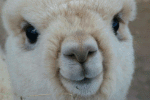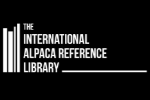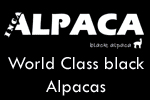Articles by Alpaca World Magazine:
PACOMARCA: The Land of Alpacas
Alono Burgos
HISTORY
Paco, in Quechua, means alpaca. Marca, in Aymara, means location, place, land of...
Pacomarca is an experimental farm owned by Grupo Inca in the Puno region. It occupies approximately 1500 hectares and lies at an altitude of 13,398 feet above sea level, on the Altiplano. In winter, the temperature goes down to -15ºC (5ºF) with very little humidity.
Pacomarca is the concrete proposal of the GRUPO INCA, a conglomerate of Textile Industries currently leading worldwide the manufacture of high-end Alpaca garments, to try to reverse the tendency to abandonment which the activity of alpaca raising is currently suffering in Perú. In the face of a steady decline in fine-fiber production over the past 30 years, and the almost total absence of serious and long-term investigation projects sponsored by the different governments and non-governmental entities (including universities), Grupo Inca decided on its own initiative to undertake a project to recover the fineness of the alpaca fiber produced in Peru.
This project really continues the original work of the Sallalli farm, which was located at the foot of the Sabancaya Volcano, and which was destroyed when the volcano erupted some years ago. Grupo Inca was hunting for an appropriate place to set up a new farm and start up its project once again: an easily accessible location, close to the main alpaca-raising areas, an electricity supply, a land area sufficiently large to be able to grow crops, a water supply, and title deeds in legal order. This search took more than three years.
EXPOSING MYTHS
The vast majority of the more than three million alpacas in Perú belong to smalltime herdsmen who usually own fewer than one hundred animals. The alpacas are raised at a population density of approximately one animal per hectare, together with llamas, sheep, cows and dogs. There are no records of production or fiber fineness, and much less of pedigree. Veterinary care is almost non-existent, and frequently animals are shorn with bits of old tin cans or even pieces of broken glass. In the Highlands it is thought that this is the only way to raise alpacas. Not surprisingly, the average fertility rates are as low as 50% and the mortality rates as high as 40%.
When Grupo Inca took the decision to implement Pacomarca, it planned for modern management, on the lines of that applied in Australia, New Zealand, and other countries with a broad experience in raising animals for wool and fine hair, using state-of-the-art technology, qualified personnel, and some capital. Instead of one alpaca per hectare, it is envisaged to raise twenty. In order to do this, cultivated pasture is indispensable as well as fences which allow rotation between paddocks. An ordered management program is also required so that not only statistics on production, weights, fiber fineness, and so on can be compiled, but also an impeccable register of family relationships between animals, so that the parents, grandparents and other ancestors of a new-born animal can be identified. This is known as pedigree. All this is brought about using not only the custom-built installations, but also efficient software, of a unique genre, specially programmed to facilitate this particular kind of management.
At present, the Pacomarca herd is composed of 1,727 animals, 76.3% of which are Huacayo and 23.7% are Suri. There are 1,118 white animals and 609 color alpacas. After five years of work the fertility rate is now over 85% and the mortality rate 7%. In terms of fiber quality, the mean micron count for white huacayos is 22.5 with an average age of 6.4 years. When comparing the result of Pacomarca´s 2006 clip production to that of local breeders, such as famous Accoyo, one can see clearly the huge difference in the quality of the clip of both farms, a result of the technical work done at Pacomarca:
SUPERIOR INFERIOR
Accoyo: 55.54% 44.55%
Pacomarca: 78.17% 21.83%
The above difference is not only due to the different animal selection process (in the case of Pacomarca clearly directed to fine quality fiber alpacas) but also of the different techniques developed in Pacomarca for the preparation, shearing and handling of fiber.
The fiber of all Pacomarca alpacas is analyzed periodically with the help of a laser-beam apparatus belonging to Inca Tops SA and the animals are entered individually in a register. The Pacomarca data system has now over 70,000 pieces of information related to its animals.
THE FUTURE
The objective of Pacomarca is to reproduce alpacas of unusually fine hair, the way the pre-Columbian cultures did, identifying specific lines of proven animals which would serve as guaranteed studs to further the improvement of fiber quality in other herds of alpacas in the country. The training of alpaca producers also forms an important part of the project. Already, groups of small time Andean breeders visit Pacomarca in order to acquire experience in different Alpaca managing techniques. Also, foreign breeders often visit Pacomarca and the rest of companies belonging to the Grupo Inca as part of the “Inca Tour of the Alpaca in Perú”, an educational and vacation trip organized and led by Pacomarca staff each year in the month of November.
The value of the extra-fine fiber produced by an exceptional, well-bred animal, can easily exceed that of a low-quality specimen by a factor of five or more. This results in as much benefit for the Upper Andean herdsman as it does for the textile industry. The companies of the GRUPO INCA are ready to back such a radical change as this, and continue to support it so that the producers can be paid better prices for their improved fiber. The Pacomarca Project is destined to play a crucial role in these events; so much so, that possibly in the not too distant future, our farm will become known as 'Alpacaland'.
www.pacomarca.com
Tweet



